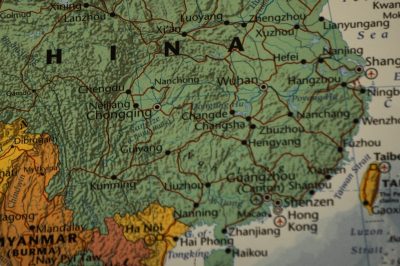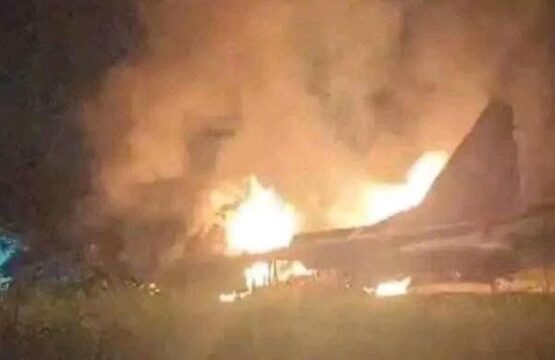The China-Tawan conflict started with the arrival of communism in China in 1921. China was then ruled by a progressive nationalist party known as Kuomintang (KMT), which entered a conflict with the CCP (Chinese Communist Party) in mainland China.
The conflict ended when KMT lost the civil war against the CCP in 1948 and retreated to Taiwan, declaring this tiny island the Republic of China (ROC). Mainland China, which was previously called ROC, now under communist rule, came to be known as PRC (People’s Republic of China).
In the years after 1948, the ROC government of Taiwan was involved in several clashes with the PRC government of mainland China until the recognition of the CCP as the official representative of mainland China by the U.N. This left Taiwan as an undeclared state with no legal rights at the international forum.
As China entered the world forum after WW2 as a state with vast economic options and weaponry due to the conflicts it had seen over the last few years, it slowly and gradually developed itself over the next few decades.
This allowed China to display itself as a hegemon or superpower on the world stage, resulting in China declaring some territories as its own. China had declared sooner, but now, after it had achieved a position to exercise power in decision-making, China started its economic as well as technological warfare with the U.S.
So, China slowly approached areas such as Taiwan and the nine-dash line through non-coercive means. The creation of artificial islands in the South China Sea is a prime example of such means.
Escalation Ladder Between China and Taiwan
Disagreement/Cold War
China and Taiwan share a long history of conflicts. The fundamental disagreement between the two states is the rightful ownership of mainland China, known as PRC (People’s Republic of China).
When the nationalist block known as Kuomintang (KMT) escaped from mainland China after losing the civil war against the CCP (Chinese Communist Party) to Taiwan, they established Taipei as the new capital of China.
However, when the U.N. allotted the CCP the rightful ownership of China, the Kuomintang was left with a small island known as Taiwan. Therefore, the main disagreement exists between the two competing political parties, who derive a one-sided argument for the whole conflict.
China is slowly moving towards challenging the U.S. as a global power. To do so, it employed economic, technological, and military means. China has emerged as the most substantial economic power in the world. However, its location is not feasible for its trade routes, so China endures high costs. China has initiated the BRI (Belt Road Initiative) and CPEC to counter this.
Similarly, China’s creation of artificial islands in the South China Sea is meant to counter the U.S. curtail of China from its South. To curtail China, the U.S. is restricting China by surrounding it from its all-territorial boundaries. The existence of U.S. forces in South Korea, Singapore, and Japan, along with Indo-US deals and AUKUS, are prime examples of steps taken by the U.S. against China.
Also Read: Rising Indian influence in the Middle East
Traditional Crisis
China and Taiwan have been at a standstill since 1958, after the second Taiwan Strait crisis occurred. However, China interfered in Taiwan’s internal issues by trying to influence its electoral process and forcing the Taiwanese people to build up a revolution to join Taiwan back with China.
- The third Taiwan Strait occurred in 1996 when Taiwanese President Lee Teng-hui decided to visit the U.S. The PLA (People’s Liberation Army) decided to carry out exercises in the region around and above Taiwan to influence the upcoming elections in Taiwan. However, these gestures in return created more support for Lee Teng-hui and he won the elections.
- Similarly, the hovering of Chinese aircraft in Taiwanese territory along with military exercises and military buildup in the strait of Taiwan. Cyber-attacks on Taiwan’s institutions to spread propaganda and hack into their governmental institutions to influence the political process in their adversary’s state.
Conventional Crisis
China and Taiwan have transitioned into a conventional battle in which either of the two states has tried to achieve its political objective.
- China suspended export to Taiwan as Taiwan is highly dependent on mainland China for natural sand, fruits, and fish. Similarly, China has banned U.S. representatives of the DeFacto state of Taiwan from entering China or Hong Kong.
- Over the last year, aircraft have flown near Taiwanese territory with Chinese naval ships, which the PRC declares as Joint Combat Readiness Patrols. The Ministry of Defense of Taiwan reported military drills along with the positioning of large aircraft carriers in Fujian, a province of China nearest to Taiwan.
- After Nancy Polisi’s visit to Taiwan, a range of ballistic missiles were fired in the area surrounding Taiwan, along with aircraft maneuvers to show a spectacular display of force.
- In the first Taiwan Strait crisis (1954), Chinese troops attacked the Matsu and Tachen islands, which were under Taiwan’s control, with shelling. Similarly, in 1958, Taiwan started building military installations on islands such as Kinmen and Matsu islands, which were within a 15km (about 9.32 mi) range of the Chinese province, Fujian. This resulted in China attacking artillery on the island’s territory, which was then deterred by U.S. interference when the President ordered U.S. forces to help Taiwan secure supply lines.
Major Conventional Crisis
Since its inception, China has kept its point of view in the form of the “One China Policy,” which rejects any two-state solution and calls for the unification of Taiwan with mainland China.
Xi Jinping’s meeting with Joe Biden in San Francisco clarified that he was growing impatient about the status quo in Taiwan. The two states should move towards a general solution for Taiwan. The U.S. told China not to get involved in the upcoming elections in Taiwan in January.
Chinese interplay with the U.S. at the global level, along with Taiwan’s inclination towards the U.S., could lead China to initiate a fourth Taiwan crisis, resulting in an invasion of Taiwan.








